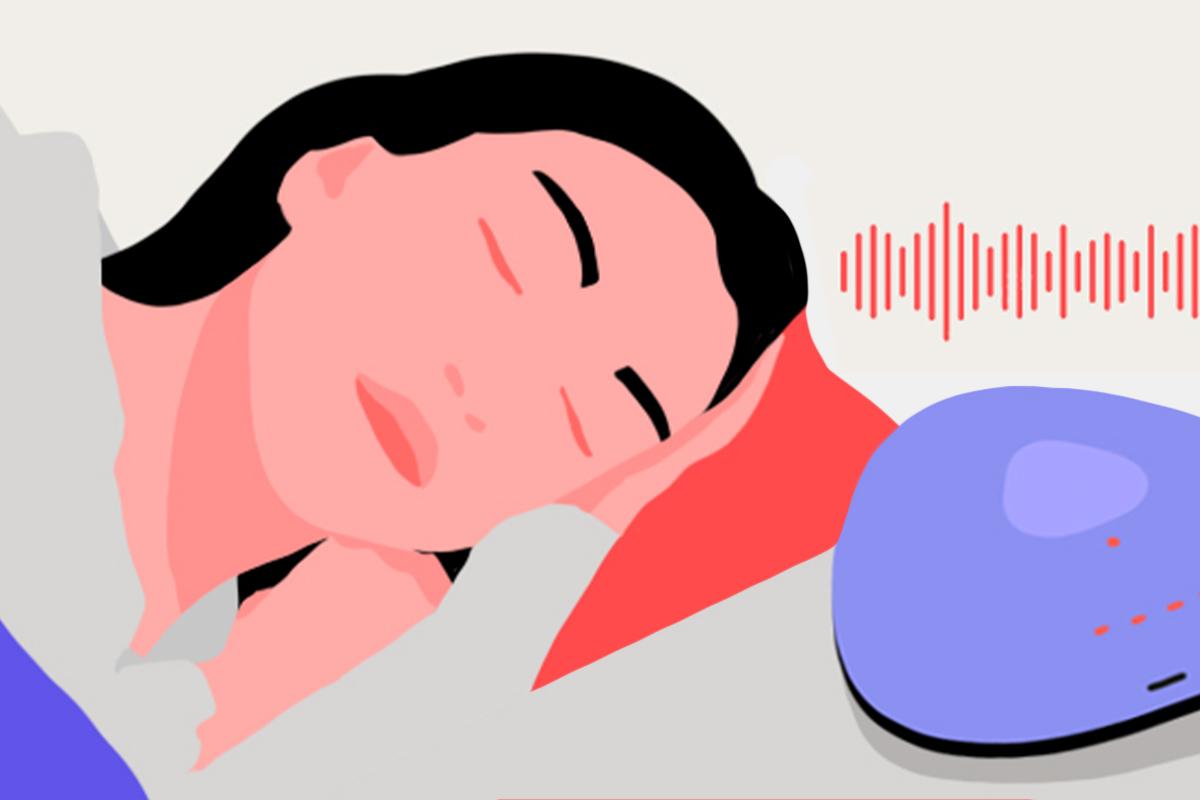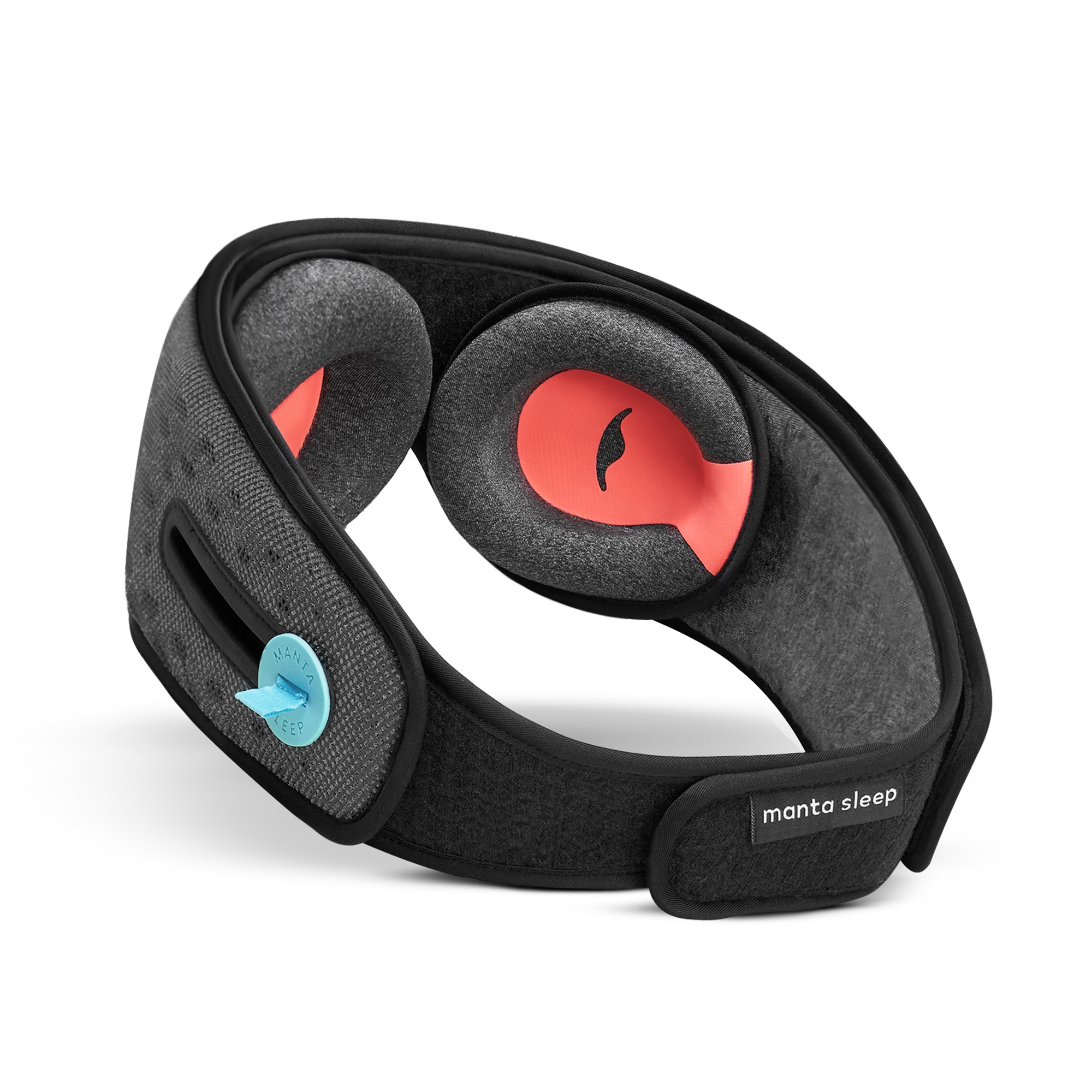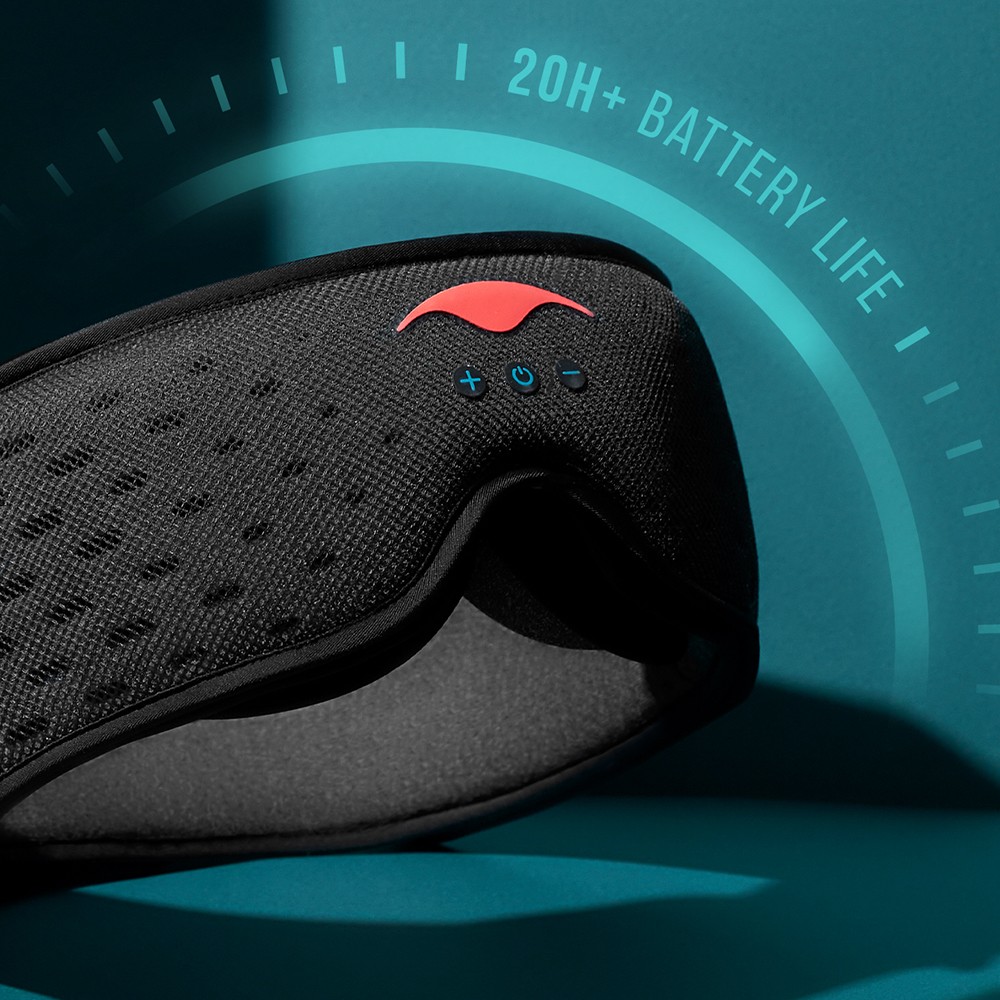Discover How White Noise Benefits Your Sleep

Explore white noise benefits to help you get a better night's rest. Read this article to learn how to use white noise to create a peaceful sleep environment.
Do you sometimes struggle to get a good night’s sleep? If so, then ask yourself these three questions:
-
Do you live in an area where noise pollution is an issue?
-
Is your bedroom a place where silence is a distant dream?
-
Does your partner snore?
If you answered yes to most of these questions, then white noise could be the sleep solution for you.
White noise may be an effective way of masking disruptive background noise. Soothing to most, it helps pave the way to deep and restful sleep.
In this blog post, we'll explore what it is, white noise benefits, and different ways to listen to it. So, if you're looking for a natural sleep aid to add to your bedtime routine, keep reading.
You may find that adding white noise to your night is the key to more energy-filled days ahead.
Table of Contents
What is White Noise?
White noise is a sound that has the same intensity across all frequencies. It sounds like static, a hiss or hum. And it’s usually used to mask other sounds or create an ambient background for relaxing.
White noise is a mix of all audible frequencies within the range of human hearing. Medical News Today says that means frequencies in the range of 20 to 20,000 Hertz(1).
This creates a consistent level of sound that helps block out other noises in your environment.
It takes its name from white light, which is a combination of all colors in the color spectrum. Fitting, don’t you agree?
Examples of White Noise
Here are a few concrete examples:
-
Crashing ocean waves
-
A whirring electric fan
-
A humming air conditioner
-
A running vacuum cleaner while it's running
-
Static from a radio or TV
These examples have one thing in common. They’re made up of random audio signals at different frequencies. These blend together to create a “white” effect.
Key White Noise Benefits for Sleep
White noise’s superpower is to mask most unwanted sounds. And this is what helps improve sleep quality.
To understand this better, let’s take a look at what makes sleep quality poor.
-
It takes more than half an hour to drift off
-
You wake up more than once during the night
-
If these awakenings keep you up for over 20 minutes since you first fell asleep
-
You spend less than 85% of your time in bed sleeping
Disruptive sounds can lead to each of these hallmarks of poor sleep quality. And that’s when white noise comes in handy.
It masks background noise.
Think traffic outside your window or loud sounds that seep through your walls from next door. Oh, and the person snoring right beside you.
The consistent hum of white noise makes other noises less noticeable. Or completely blocks them out. You’ll fall asleep faster with fewer rude awakenings. Both characteristics of good sleep quality.
It has a calming effect.
If there’s anything that keeps many of us up at night, it’s stress and anxiety. That’s why you need to get into a relaxed state before attempting to hit the hay.
Loud noises stimulate the brain (and not in a good way). They can be stressful and jarring. The fact that white noise can mask these types of sounds means it may help provide a calming atmosphere.
Its consistent hum or hiss acts somewhat like an anchor for your mind. It masks everything else. Perfect if you’re stressed or anxious.
For instance, white noise soothes crying babies. A study in the National Library of Medicine found that white noise helps calm crying babies(2). It may help block distractions, letting your brain focus on one thing at a time.
It improves focus.
Another benefit is it improves focus while studying or working. Sleep Foundation says there’s evidence that white noise benefits work performance(3). It may not be directly related to sleep but it shows how versatile white noise is.
White noise is also good for meditation. Its consistent sound helps you focus and clear your mind as you meditate. And in case you’re unaware, meditation is an effective way to relax before hitting the sack.
Experts recommend it as a good practice to add to your pre-bedtime routine.
💡 Key Takeaway: White noise may improve sleep quality because it masks unwanted sounds. Key white noise benefits for sleep include lowering stress levels and promoting relaxation. It also helps improve focus for better work performance.
Different Ways to Listen to White Noise While Asleep

With all the benefits, it comes as no surprise that white noise is a popular sleep aid.
Want to start incorporating white noise into your bedtime routine? You have quite a few options. There are white noise machines, apps and sleep masks with headphones. And of course, good old Mother Nature.
Nature
It’s free and nothing beats the real thing. Real rain falling on leaves or hearing actual ocean waves crashing on the shore isn’t only about sound. It’s about fresh air and a natural calming atmosphere.
But, hey nature isn’t easy to come by, especially if you live in an urban jungle. That’s why you have other options.
Use a White Noise Machine
Need to drown out distracting sounds to relax? A white noise machine is a good solution.
These devices emit white noise that masks sound so you’re less stressed and sleep better.
They come in various shapes and sizes. We recommend choosing ones that are lightweight and portable. Keep an eye out for audio quality and sound variety, too. Others have extra bells and whistles but bear in mind they may run pricier.
White Noise Apps
Another option is to check out white noise apps available online. You can listen to them from your phone.
Here are a few great apps to consider that are compatible with:
-
Sound Machine (iOS)
-
Pzizz (iOS or Android)
-
Noisli (iOS or Android)
-
White Noise HQ (iOS)
-
Atmosphere: Relaxing Sounds (iOS or Android)
If you want better audio quality, pair your phone with a Bluetooth speaker. We have a better option, by the way. So, keep reading.
Wear a Sleep Mask with Headphones
There are many types of headphones out there. But you might be wondering: Is it bad to wear headphones to sleep?
The short answer is no, but you need to be careful. Risks include sleep discomfort, impaired hearing and ear infections.
A safer way to listen to white noise with headphones is to wear a sleep mask with built-in speakers. So not only do you get to listen to white noise. You’ll also enjoy complete darkness, which is essential for good sleep.
There are a lot of options out there. But we don’t mind saying that our version is one of the best yet.
Manta Sleep Mask SOUND

We put a lot of effort into designing this super comfy Bluetooth sleep mask. Manta Sleep Mask SOUND features good sound quality and breathability. It’s great for side sleeping (and works well with other sleep positions, too).

The mask comes with built-in Bluetooth speakers that pair with any compatible device. They’re also adjustable. Pull the blue tabs to move them closer (or further) to your ears.

It also comes with detachable C-shaped eye cups that block out 100% of light. You won't feel any pressure on your eyes or lashes, either. Each cup has an air bubble that compresses and then expands as you switch sides.

We made the 2-layer head strap with cooling perforated foam and soft mesh. And it's infinitely adjustable, too. Unlike other sleep masks with headphones, the inner strap is 100% machine washable.

Adjusting the settings is easy as the buttons are located at the front of the mask. And don’t let the size of the speakers fool you. They have immersive audio quality.
💡 Key Takeaway: White noise benefits sleep by blocking out environmental noise. It helps provide a calmer atmosphere. Listen to it in nature or with white noise machines, apps and headphones. But a safer more comfy option is a sleep mask with headphones.
Common Questions About White Noise Benefits
What is white noise good for?
White noise may have a calming effect, enhance focus and improve sleep quality. It blocks out unwanted environmental noise like traffic or construction. As well as snoring or noise in other parts of your home.
Some people with tinnitus use white noise to find relief from the ringing in their ears. It helps create a calming atmosphere for meditation and relaxation.
What does white noise do to your brain?
It can help reduce distractions and anxiety caused by disruptive sounds. This makes it easier for your brain to relax. It may also improve focus leading to better work performance.
Is it OK to play white noise all night?
Some people swear by it. But some studies found it may have adverse effects on your sleep quality if it’s too loud or continuous.
To be safe, keep it at a low volume. Research suggests keeping white noise at 46 decibels or lower for all-night listening.
Consider, too, using it to wind down before bed instead of sleeping with it all night long.
Is white noise good for anxiety?
Yes. white noise may help with anxiety. It masks loud noises and creates a more calming, less stressful environment.
Studies show it calms restlessness in people with Attention Deficit Hyperactivity Disorder (ADHD). And It’s also used to help people with tinnitus. It helps them cope with the ringing in their ears.
Conclusion
White noise benefits sleep by masking unwanted noise. It provides a calming effect to ease pre-bedtime anxiety. And it helps you drift off faster and stay asleep longer.
Apart from the above, it helps improve focus and ease symptoms of ADHD and tinnitus. But it's important to note that not everyone enjoys white noise for long periods of time. Try it out first to see if it works for you.
You have many options when it comes to listening to white noise:
-
Nature
-
White noise machines
-
Apps
-
Sleep masks with headphones
We hope this article helped you determine if it's worth giving this natural sleep aid a shot. Consider trying it out with Manta Sleep Mask SOUND.
Let us know if and how white noise benefits your sleep. Drop a comment below.
Sources:
(1) “Everything you need to know about pink noise, white noise, and sonic hues.” Medical News Today, www.medicalnewstoday.com/articles/pink-noise-vs-white-noise. Accessed 29 March 2023.
(2) “White noise and sleep induction.” National Library of Medicine, www.ncbi.nlm.nih.gov/pmc/articles/PMC1792397/. Accessed 30 March 2023.
(3) “White Noise” Jumpstart by WebMD, www.sleepfoundation.org/noise-and-sleep/white-noise. Accessed 30 March 2023.
Disclaimer: The information contained in this website or provided through our blog, e-mails, or programs is for informational purposes only. It is not intended to be a substitute for medical advice, diagnosis or treatment that can be provided by your healthcare professionals.












































